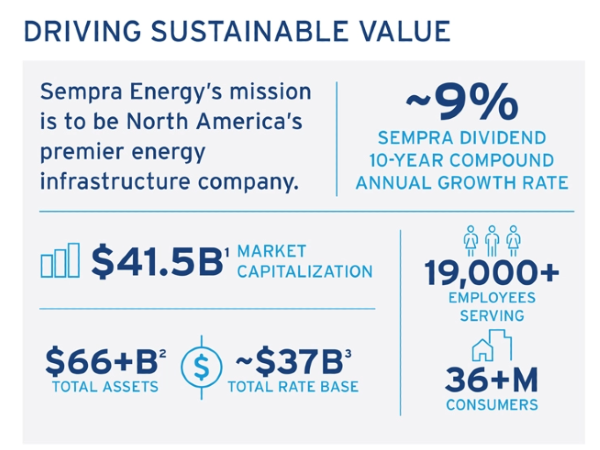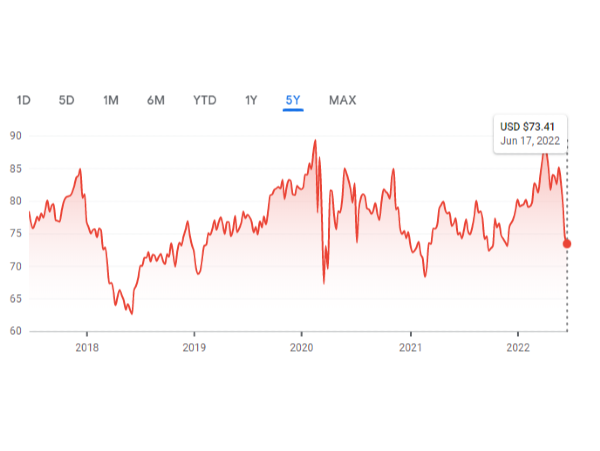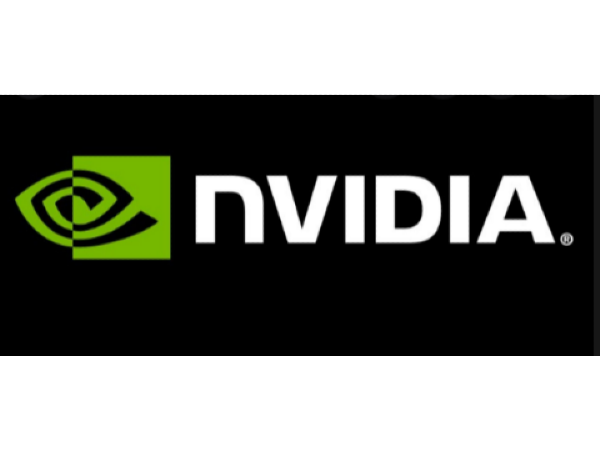Overview: The strong equity market rally seen at the end of last week is carrying into today’s activity. Most of the large markets in Asia Pacific rose by at least 1%. After a 2.6% rally before the weekend, Europe’s Stoxx 600 is up around 0.8%. US futures are around 0.5% after a soft opening. Benchmark 10-year yields jumped 7-11 bp in Europe and peripheral premiums are widening. The 10-year US Treasury yield is around three basis points higher around 3.16%. The US dollar is mostly heavier against the major currencies. Sweden is expected to hike by 50 bp later this week and the Swedish krona is the strongest of the majors today. The Antipodeans are the laggards. News of Russia’s first default on foreign obligations seems largely symbolic and the rouble is trading over 1% higher to lead the emerging market complex. The South African rand, Mexican peso, and Hungarian forint are recording modest losses. Gold is firm but below the $1850 area. The G7 ban on gold imports from Russia appears largely symbolic as the impact of other sanctions curtail the gold trade. August WTI is in the upper part of its pre-weekend range but holding below $108.50. US natgas is off nearly 2% to trade at its lowest level since early April. Europe’s benchmark, which eased for the first time in two weeks ahead of the weekend is recouping it today. Some optimism in China helped lift iron ore prices by nearly 6% today, which fully recovers last week’s loss. Copper has steadied after falling to early 2021 lows last week. September wheat plummeted 10.5% last week to three-month lows. It opened softer today but has recovered to trade about 1.5% higher.
Asia Pacific
China's zero-Covid policy and the subsequent lockdowns have been the second significant shock this year after Russia's invasion of Ukraine. Part of China's problem, as the IMF reminded at the end of last week in its call for Beijing to accelerate its vaccination efforts, is its vulnerability. The zero-Covid policy is a reaction to the low vaccination rate. First, the home-grown Sinovac is understood not be very effective. Some reports suggest that three doses of it is needed to duplicate what the mRNA can do. Second, press reports quote China's National Health Commission estimate that less than 2/3 of the population older than 60 have had their three doses. As the second quarter winds down, risk of further flare-ups and lockdowns in China remain high. Beijing will announce the economic impact in a couple of weeks when it reports Q2 GDP (July 14). The median forecast in Bloomberg's survey projects a 1.4% contraction (quarter-over-quarter) after a 1.3% advance in Q1. Later this week, China's June composite PMI is likely to have risen for the second consecutive month, but economists are skeptical. Private estimates, and the IMF's own view based on data from Shanghai that it monitors, are less constructive than the official data (not surprising). While the national data suggests an economy that has nearly fully recovered, the IMF sees only about half to it.
China announced a new yuan reserve pool with the Bank for International Settlements. It claims five other "regulators" will join but one of them is Hong Kong. When it suits Beijing, Hong Kong is regarded an external "regulator" though in many other respects there has been an increasing Sino-ificaiton of Hong Kong. The others are Indonesia, Malaysia, Singapore, and Chile. Each will pony up CNY15 bln CNY or $2.2 bln for this new Renminbi Liquidity Arrangement housed at the BIS. In crisis, the members could draw on their contributions and activate more liquidity through a collateralized window. Terms and conditions were not reported. Some try to frame this as another attempt by China to internationalize the yuan, like the bilateral swap lines the PBOC have put into place, but with an exception or two, have been unused. Yet, the new arrangement is small beer, and hard a challenge to the US dollar's primacy. On the other hand, the swaps lines arranged by the Federal Reserve are understood as significant measures that helped stabilize the global capital markets. Last week, SWIFT reported that the yuan has a 2.15% market share on its messaging network. This is down from 2.70% at the end of last year, and inconsequentially higher than the 1.94% share in December 2019. The lack of use of the yuan in most trade and minor amount of yuan-bond issued by non-Chinese entities, which is even smaller when the multilaterals, like the Asian Development Bank and the International Finance Corporation (arm of the World Bank).
The dollar is consolidating in narrow range against the Japanese yen. It is inside the range seen before the weekend (~JPY134.25-JPY135.40). It is recording lower highs and higher lows. That said, the greenback has spent little time below JPY134.50, where a $375 mln option expires today. The Australian dollar is also trading quietly within the ranges seen in recent days. It has mostly traded with a $0.6900-handle. Initial resistance is seen at $0.6975. An A$545 mln option struck there expires today. The greenback recorded a lower high against the Chinese yuan for the third consecutive session, holding below CNY6.6950. It set a four-day low slightly below CNY6.6835. The takeaway here too is the continuation of the consolidative tone that emerged last week. The dollar's reference rate was set at CNY6.6850, nearly spot on expectation (median in Bloomberg's survey of CNY6.6849).
Europe
A few days after the ECB meets on June 9 and reiterated its intention to hike rates by 25 bp next month, the year-end rate projected by the swaps market peaked at almost 1.22%. Today it is around 0.96%. The market has become increasing concerned about a recession. The preliminary June composite PMI fell to 51.9 from 54.6. It is the lowest since the sub-50 boom/bust readings early last year. Economists (median forecast, Bloomberg survey) was for mild slippage to 54.0. Consider the four largest EMU members. The median forecast in Bloomberg survey of the odds of a recession over the next 12 months, is 32.5% for Germany (US is at 33%). The odds of a French recession were estimated at 60%, Spain 70% and Italy 80%.
Perhaps not totally unrelated, the International Energy Agency warned Europe should prepare immediately for a complete loss of Russian gas. Russia has been reducing its gas supplies sent to Europe, seemingly quitting before it gets fired. Prior to the war, Russia provided around 40% of EU's gas. It has been reduced to 20%, but the low-hanging fruit of other suppliers have been tapped. The remainder is expected to prove more difficult to replace. Several countries have boosted their coal-fired generation (Germany, Sweden, Denmark, Austria, and the Netherlands). The first stage of emergency plans has been implemented though there is no rationing yet. The IEA recommended delaying shutting nuclear facilities in a thinly veiled message to Germany, which plans to take the last of its nuclear generators offline later this year. Berlin argues that technical and safety issues are too steep to alter course. The European benchmark rose by around 57% in the sessions before last Friday, when finished with a minor loss of less than 0.4%. The benchmark has roughly doubled this year.
The euro is firm and near its recent highs, though holding below $1.06. The euro has not closed above its 20-day moving average since the day before the ECB met on June 9. It is found today near $1.0585. Initial support is pegged around $1.0550. A convincing move above $1.06 targets the upper the end of the previous range near $1.08. Sterling edged above last week's high to about $1.2325. It needs to overcome resistance in the $1.2350-$1.2400 area. It remains within the range set on June 16 (~$1.2040-$1.2400). It too has not closed above its 20-day moving average (now ~$1.2360) since June 8. The intraday momentum looks stretched and a pullback into the $1.2260-$1.2280 area ought not to be surprising.
America
The US reports the preliminary estimate for May durable goods orders and pending homes sales, and the Dallas Fed's June manufacturing survey. The durable goods orders will have the most impact on Q2 GDP expectations. The Atlanta Fed will update its model after the data. Its last iteration was for no growth. While this attracts the pessimists, note that the St. Louis Fed GDP Nowcast is almost 3.9%, while the median in Bloomberg's latest survey is for a 3% growth. The market is less sanguine than economists. Last week, the implied yield of the December 2022 Fed funds contract fell to almost 15 bp and the implied yield of the December 2023 Fed funds futures fell below it for the first time. When Fed Chair Powell explained the decision to hike by 75 bp instead of 50 bp he cited the sharper than expected rise in CPI and the University of Michigan's preliminary 5-10-year consumer inflation expectation. Before the weekend, the final reading was revised down to 3.1% from 3.3%. This is a 0.1% increase and brings it to levels seen in January. Most likely, the Fed would have still hiked the target rate by 75 bp. The key may not really be the data itself, but that the market had done the Fed's lifting and had nearly a 75 bp hike discounted. The Fed funds futures market is discounting about an 80% chance of a 75 bp hike instead to 50 bp when the Fed next meets (July 27).
The market has scaled back the extent of Bank of Canada hikes. It began in the middle of the June as the implied yield of the December 2023 BA futures slipped below the implied yield of the December 2022 BA futures. The yield differential peaked at around 15 bp before slipping to 12.5 bp ahead of the weekend. In early June, Canada's two-year yield was around a 30 bp premium to the US. It is now around six basis points. The correlation of the change in the yield differential and exchange rate over the past 30 days is relatively high about 0.45%. It was negative at the start of the month. The correlation with the S&P 500 is more robust around 0.77%.
The US dollar settled last week on its lows slightly below CAD1.29. Follow-through selling has seen it test the CAD1.2860 area, which is an important technical area. It corresponds to the (38.2%) retracement objective of the rally from the June 8 low (about CAD1.2520) to the June 17 high (about CAD1.3080). It is also the neckline of a possible head and shoulders top that would project to around CAD1.2660, which corresponds to the 200-day moving average (about CAD1.2675). The greenback slumped 2.3% against the Mexican peso last week, its largest decline in three months. It briefly traded below the pre-weekend low near MXN19.8270 but found a bid near MXN19.82. Mexico reports May trade figures today and another large deficit is expected. A move back above MXN20.00 would help stabilize the tone and a move above MXN20.08 would suggest a near-term low is in place.
Originally posted on Monday, June 27th 2022 on marctomarket.com



























Overview: The strong equity market rally seen at the end of last week is carrying into today’s activity. Most of the large markets in Asia Pacific rose by at least 1%. After a 2.6% rally before the weekend, Europe’s Stoxx 600 is up around 0.8%. US futures are around 0.5% after a soft opening. Benchmark 10-year yields jumped 7-11 bp in Europe and peripheral premiums are widening. The 10-year US Treasury yield is around three basis points higher around 3.16%. The US dollar is mostly heavier against the major currencies. Sweden is expected to hike by 50 bp later this week and the Swedish krona is the strongest of the majors today. The Antipodeans are the laggards. News of Russia’s first default on foreign obligations seems largely symbolic and the rouble is trading over 1% higher to lead the emerging market complex. The South African rand, Mexican peso, and Hungarian forint are recording modest losses. Gold is firm but below the $1850 area. The G7 ban on gold imports from Russia appears largely symbolic as the impact of other sanctions curtail the gold trade. August WTI is in the upper part of its pre-weekend range but holding below $108.50. US natgas is off nearly 2% to trade at its lowest level since early April. Europe’s benchmark, which eased for the first time in two weeks ahead of the weekend is recouping it today. Some optimism in China helped lift iron ore prices by nearly 6% today, which fully recovers last week’s loss. Copper has steadied after falling to early 2021 lows last week. September wheat plummeted 10.5% last week to three-month lows. It opened softer today but has recovered to trade about 1.5% higher.
Asia Pacific
China's zero-Covid policy and the subsequent lockdowns have been the second significant shock this year after Russia's invasion of Ukraine. Part of China's problem, as the IMF reminded at the end of last week in its call for Beijing to accelerate its vaccination efforts, is its vulnerability. The zero-Covid policy is a reaction to the low vaccination rate. First, the home-grown Sinovac is understood not be very effective. Some reports suggest that three doses of it is needed to duplicate what the mRNA can do. Second, press reports quote China's National Health Commission estimate that less than 2/3 of the population older than 60 have had their three doses. As the second quarter winds down, risk of further flare-ups and lockdowns in China remain high. Beijing will announce the economic impact in a couple of weeks when it reports Q2 GDP (July 14). The median forecast in Bloomberg's survey projects a 1.4% contraction (quarter-over-quarter) after a 1.3% advance in Q1. Later this week, China's June composite PMI is likely to have risen for the second consecutive month, but economists are skeptical. Private estimates, and the IMF's own view based on data from Shanghai that it monitors, are less constructive than the official data (not surprising). While the national data suggests an economy that has nearly fully recovered, the IMF sees only about half to it.
China announced a new yuan reserve pool with the Bank for International Settlements. It claims five other "regulators" will join but one of them is Hong Kong. When it suits Beijing, Hong Kong is regarded an external "regulator" though in many other respects there has been an increasing Sino-ificaiton of Hong Kong. The others are Indonesia, Malaysia, Singapore, and Chile. Each will pony up CNY15 bln CNY or $2.2 bln for this new Renminbi Liquidity Arrangement housed at the BIS. In crisis, the members could draw on their contributions and activate more liquidity through a collateralized window. Terms and conditions were not reported. Some try to frame this as another attempt by China to internationalize the yuan, like the bilateral swap lines the PBOC have put into place, but with an exception or two, have been unused. Yet, the new arrangement is small beer, and hard a challenge to the US dollar's primacy. On the other hand, the swaps lines arranged by the Federal Reserve are understood as significant measures that helped stabilize the global capital markets. Last week, SWIFT reported that the yuan has a 2.15% market share on its messaging network. This is down from 2.70% at the end of last year, and inconsequentially higher than the 1.94% share in December 2019. The lack of use of the yuan in most trade and minor amount of yuan-bond issued by non-Chinese entities, which is even smaller when the multilaterals, like the Asian Development Bank and the International Finance Corporation (arm of the World Bank).
The dollar is consolidating in narrow range against the Japanese yen. It is inside the range seen before the weekend (~JPY134.25-JPY135.40). It is recording lower highs and higher lows. That said, the greenback has spent little time below JPY134.50, where a $375 mln option expires today. The Australian dollar is also trading quietly within the ranges seen in recent days. It has mostly traded with a $0.6900-handle. Initial resistance is seen at $0.6975. An A$545 mln option struck there expires today. The greenback recorded a lower high against the Chinese yuan for the third consecutive session, holding below CNY6.6950. It set a four-day low slightly below CNY6.6835. The takeaway here too is the continuation of the consolidative tone that emerged last week. The dollar's reference rate was set at CNY6.6850, nearly spot on expectation (median in Bloomberg's survey of CNY6.6849).
Europe
A few days after the ECB meets on June 9 and reiterated its intention to hike rates by 25 bp next month, the year-end rate projected by the swaps market peaked at almost 1.22%. Today it is around 0.96%. The market has become increasing concerned about a recession. The preliminary June composite PMI fell to 51.9 from 54.6. It is the lowest since the sub-50 boom/bust readings early last year. Economists (median forecast, Bloomberg survey) was for mild slippage to 54.0. Consider the four largest EMU members. The median forecast in Bloomberg survey of the odds of a recession over the next 12 months, is 32.5% for Germany (US is at 33%). The odds of a French recession were estimated at 60%, Spain 70% and Italy 80%.
Perhaps not totally unrelated, the International Energy Agency warned Europe should prepare immediately for a complete loss of Russian gas. Russia has been reducing its gas supplies sent to Europe, seemingly quitting before it gets fired. Prior to the war, Russia provided around 40% of EU's gas. It has been reduced to 20%, but the low-hanging fruit of other suppliers have been tapped. The remainder is expected to prove more difficult to replace. Several countries have boosted their coal-fired generation (Germany, Sweden, Denmark, Austria, and the Netherlands). The first stage of emergency plans has been implemented though there is no rationing yet. The IEA recommended delaying shutting nuclear facilities in a thinly veiled message to Germany, which plans to take the last of its nuclear generators offline later this year. Berlin argues that technical and safety issues are too steep to alter course. The European benchmark rose by around 57% in the sessions before last Friday, when finished with a minor loss of less than 0.4%. The benchmark has roughly doubled this year.
The euro is firm and near its recent highs, though holding below $1.06. The euro has not closed above its 20-day moving average since the day before the ECB met on June 9. It is found today near $1.0585. Initial support is pegged around $1.0550. A convincing move above $1.06 targets the upper the end of the previous range near $1.08. Sterling edged above last week's high to about $1.2325. It needs to overcome resistance in the $1.2350-$1.2400 area. It remains within the range set on June 16 (~$1.2040-$1.2400). It too has not closed above its 20-day moving average (now ~$1.2360) since June 8. The intraday momentum looks stretched and a pullback into the $1.2260-$1.2280 area ought not to be surprising.
America
The US reports the preliminary estimate for May durable goods orders and pending homes sales, and the Dallas Fed's June manufacturing survey. The durable goods orders will have the most impact on Q2 GDP expectations. The Atlanta Fed will update its model after the data. Its last iteration was for no growth. While this attracts the pessimists, note that the St. Louis Fed GDP Nowcast is almost 3.9%, while the median in Bloomberg's latest survey is for a 3% growth. The market is less sanguine than economists. Last week, the implied yield of the December 2022 Fed funds contract fell to almost 15 bp and the implied yield of the December 2023 Fed funds futures fell below it for the first time. When Fed Chair Powell explained the decision to hike by 75 bp instead of 50 bp he cited the sharper than expected rise in CPI and the University of Michigan's preliminary 5-10-year consumer inflation expectation. Before the weekend, the final reading was revised down to 3.1% from 3.3%. This is a 0.1% increase and brings it to levels seen in January. Most likely, the Fed would have still hiked the target rate by 75 bp. The key may not really be the data itself, but that the market had done the Fed's lifting and had nearly a 75 bp hike discounted. The Fed funds futures market is discounting about an 80% chance of a 75 bp hike instead to 50 bp when the Fed next meets (July 27).
The market has scaled back the extent of Bank of Canada hikes. It began in the middle of the June as the implied yield of the December 2023 BA futures slipped below the implied yield of the December 2022 BA futures. The yield differential peaked at around 15 bp before slipping to 12.5 bp ahead of the weekend. In early June, Canada's two-year yield was around a 30 bp premium to the US. It is now around six basis points. The correlation of the change in the yield differential and exchange rate over the past 30 days is relatively high about 0.45%. It was negative at the start of the month. The correlation with the S&P 500 is more robust around 0.77%.
The US dollar settled last week on its lows slightly below CAD1.29. Follow-through selling has seen it test the CAD1.2860 area, which is an important technical area. It corresponds to the (38.2%) retracement objective of the rally from the June 8 low (about CAD1.2520) to the June 17 high (about CAD1.3080). It is also the neckline of a possible head and shoulders top that would project to around CAD1.2660, which corresponds to the 200-day moving average (about CAD1.2675). The greenback slumped 2.3% against the Mexican peso last week, its largest decline in three months. It briefly traded below the pre-weekend low near MXN19.8270 but found a bid near MXN19.82. Mexico reports May trade figures today and another large deficit is expected. A move back above MXN20.00 would help stabilize the tone and a move above MXN20.08 would suggest a near-term low is in place.
Originally posted on Monday, June 27th 2022 on marctomarket.com